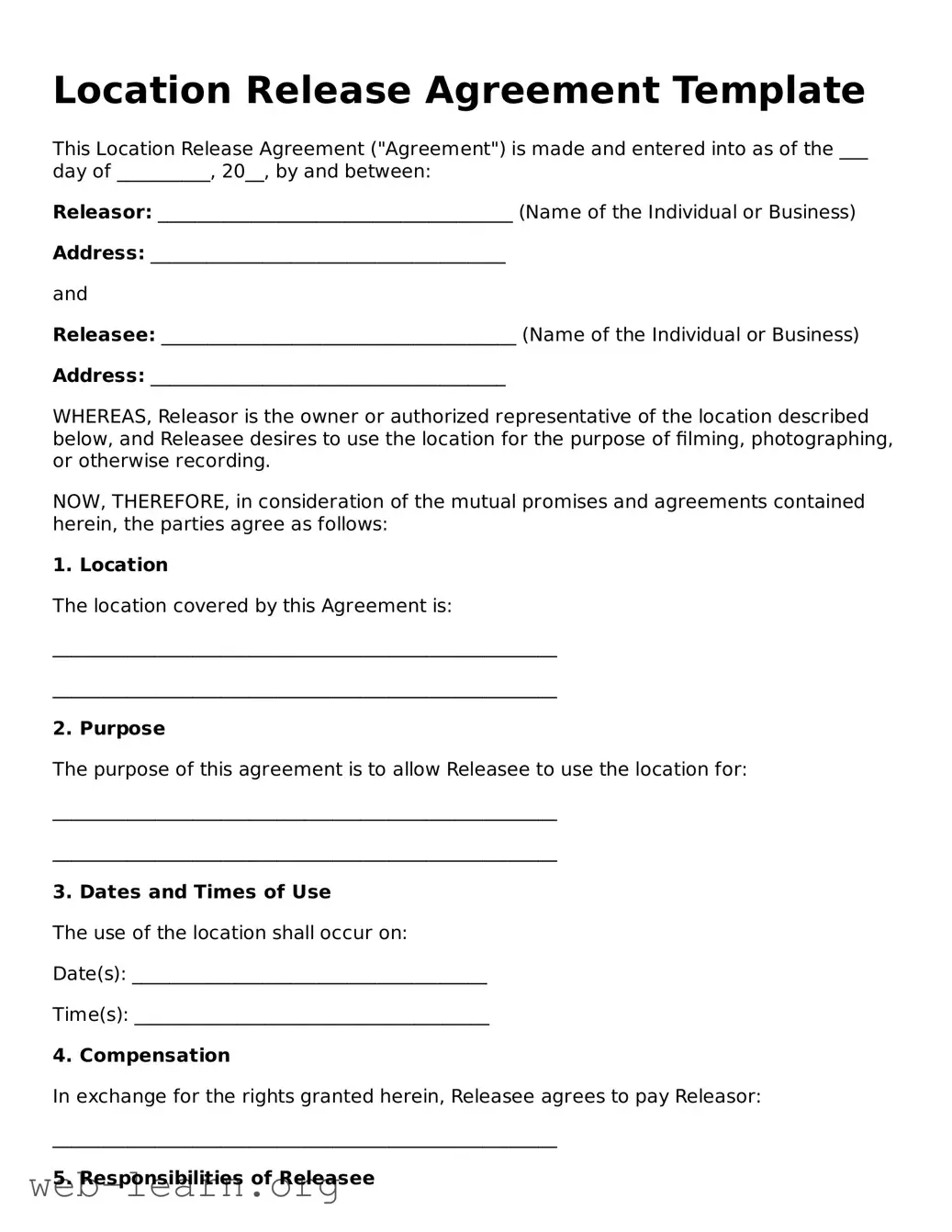Location Release Agreement Template
This Location Release Agreement ("Agreement") is made and entered into as of the ___ day of __________, 20__, by and between:
Releasor: ______________________________________ (Name of the Individual or Business)
Address: ______________________________________
and
Releasee: ______________________________________ (Name of the Individual or Business)
Address: ______________________________________
WHEREAS, Releasor is the owner or authorized representative of the location described below, and Releasee desires to use the location for the purpose of filming, photographing, or otherwise recording.
NOW, THEREFORE, in consideration of the mutual promises and agreements contained herein, the parties agree as follows:
1. Location
The location covered by this Agreement is:
______________________________________________________
______________________________________________________
2. Purpose
The purpose of this agreement is to allow Releasee to use the location for:
______________________________________________________
______________________________________________________
3. Dates and Times of Use
The use of the location shall occur on:
Date(s): ______________________________________
Time(s): ______________________________________
4. Compensation
In exchange for the rights granted herein, Releasee agrees to pay Releasor:
______________________________________________________
5. Responsibilities of Releasee
- To set up, use, and take down all equipment.
- To maintain the cleanliness and integrity of the location.
- To ensure that all applicable laws and regulations are followed.
6. Indemnification
Releasee agrees to indemnify and hold harmless Releasor, its agents, employees, and assigns from any claims, liabilities, or damages arising out of the use of the location.
7. Governing Law
This Agreement shall be governed by the laws of the State of __________.
8. Entire Agreement
This document constitutes the entire agreement between the parties and supersedes any prior understandings or agreements, whether written or oral, regarding the subject matter hereof.
IN WITNESS WHEREOF, the parties hereto have executed this Location Release Agreement as of the day and year first above written.
Releasor Signature: _____________________________ Date: _______________
Releasee Signature: _____________________________ Date: _______________
